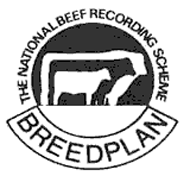
Mature Cow Weight EBVs in BREEDPLAN

Mature Cow Weight EBVs
Since 1998, BREEDPLAN has been able to calculate Mature Cow Weight EBVs. Many breed societies have now taken up this option. This EBV is an indicator of the following:
- Cow feed requirements — yearling breeders, for example, may seek stock which ‘bend the growth curve’, with high yearling weight, but moderate mature cow size.
- Note: As more Net Feed Intake EBVs become available, these will of course be more accurate, but, in the interim, the Mature Cow Weight EBV is an indicator of feed requirements.
- Mature steer size — breeders of heavy steers, for example, may seek high Mature Weight EBVs. This is of particular importance for long-term feedlot feeding programs.
- Cull cow values
While 600 Day Weight EBVs are good indicators of cow and steer size, the Mature Cow Weight EBVs can at times be an even better guide. This is particularly so in many breeds/herds, where yearling bulls are being sold, and fewer 600 Day Weights are taken.
Recording Cow Weight and Cow Fat Score
Breeders wishing to receive the Mature Cow Weight EBVs only need to weigh the cows when calves are weighed at weaning, and preferably also record the Cow Fat Score. Cows not weaning a calf will be excluded from the analysis. Up to four cow weights will be analysed, preferably starting with the first weaning. The fat scores are currently not being used in the analysis but are stored for later use. They may, for example, assist to determine if low mature cow weight indicates small cows or low-condition cows.
The Six AUS-MEAT Cow Fat Scores
The standard six AUS-MEAT fat scores are to be used. Diagrams explaining these, together with the fat ranges, are given in Table 1. (Note: For breeds not exhibiting much subcutaneous fat, such as continental European breeds, it may be more meaningful to interpret these six scores as condition scores. It is suggested breeders discuss this with BREEDPLAN or society staff.)
| Fat score | Description |
|---|---|
|
1 Very lean 0–2 mm |
Angular and narrow. Hips, pins, backbone and ribs very prominent. No filling in brisket. Cut-up flank. |
|
2 Lean 3–6 mm |
Hips, pins, backbone and ribs obvious but not prominent. Flank still cut up, but a little filling in brisket. |
|
3 Medium 7–12 mm |
Moderately rounded appearance. Hips, pins, backbone and ribs lightly covered. Flank filled to about stifle joint. More filling in brisket. |
|
4 Fat 13–22 mm |
Smooth covering over hips, pins, backbone and ribs to give well-rounded appearance, particularly near tailhead. Flank filled to below stifle joint. Brisket full. |
|
5 Very fat 23–32 mm |
Heavy fat covering, starting to be lumpy, over hips, pins, backbone and ribs. Pronounced fat deposits near tailhead. Distended brisket. |
|
6 Extreme 33+ mm |
Very heavy and lumpy covering over hips, pins, backbone and ribs. Very pronounced ‘boxing gloves’ near tailhead. Very distended brisket. |
Further information
- See other Agnotes in this series for further information on BREEDPLAN and EBVs.
- Live cattle assessment

